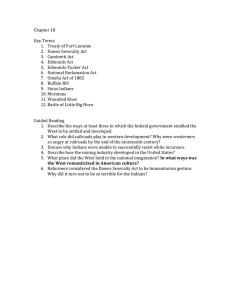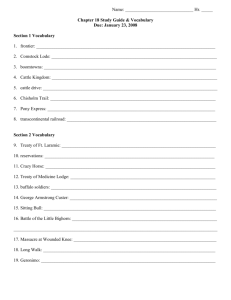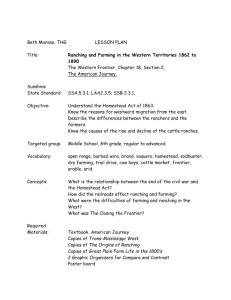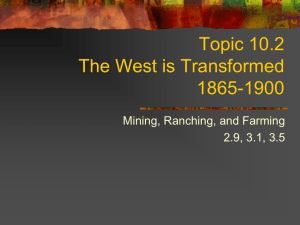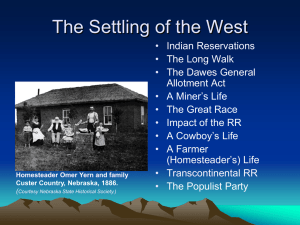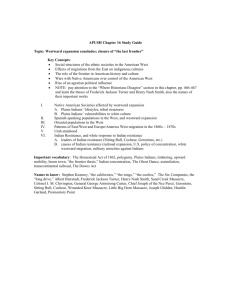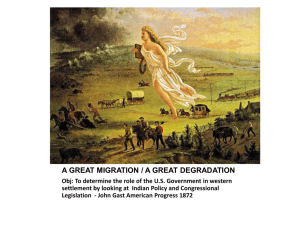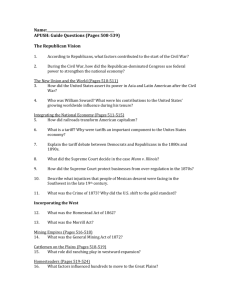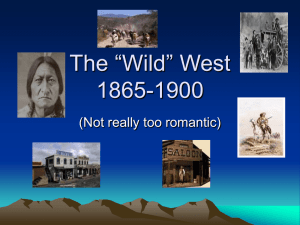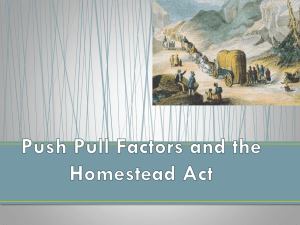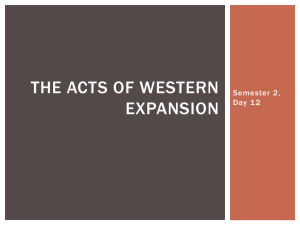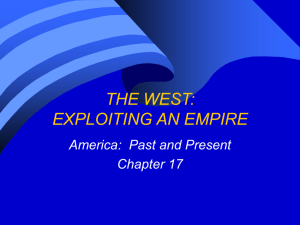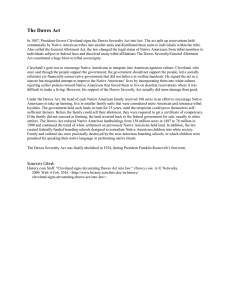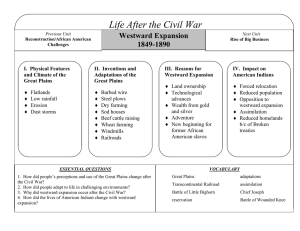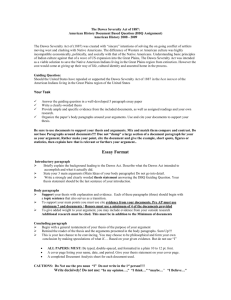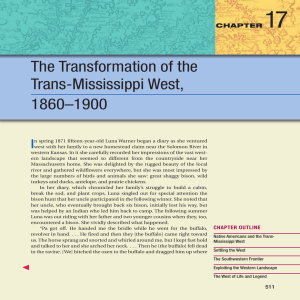Document
advertisement
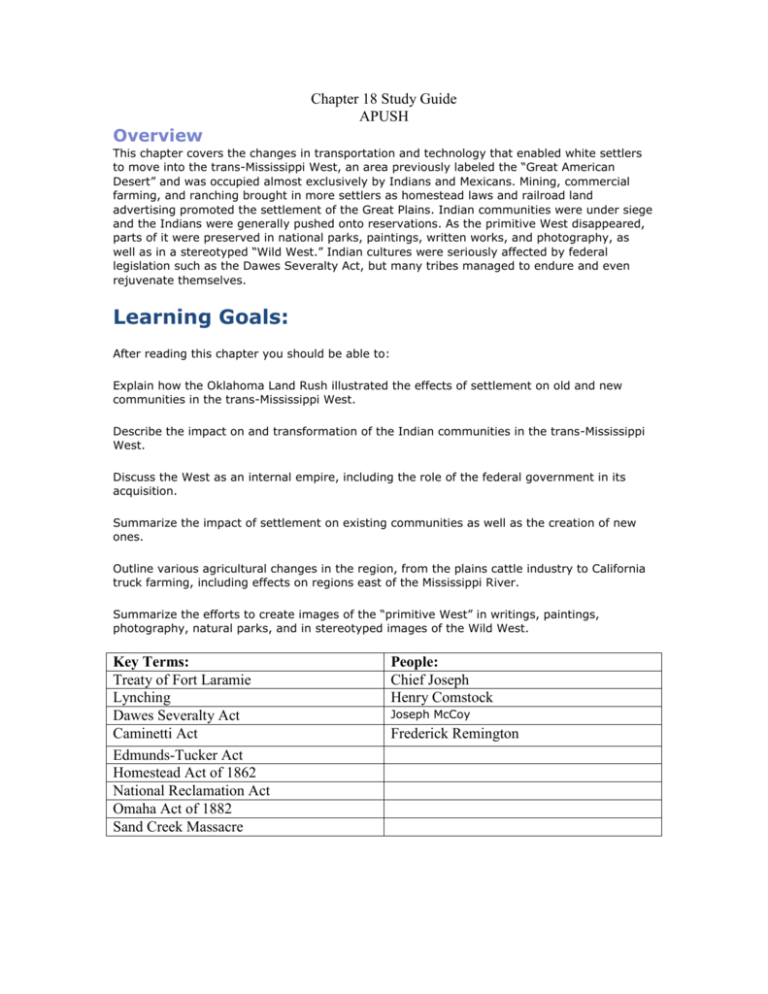
Chapter 18 Study Guide APUSH Overview This chapter covers the changes in transportation and technology that enabled white settlers to move into the trans-Mississippi West, an area previously labeled the “Great American Desert” and was occupied almost exclusively by Indians and Mexicans. Mining, commercial farming, and ranching brought in more settlers as homestead laws and railroad land advertising promoted the settlement of the Great Plains. Indian communities were under siege and the Indians were generally pushed onto reservations. As the primitive West disappeared, parts of it were preserved in national parks, paintings, written works, and photography, as well as in a stereotyped “Wild West.” Indian cultures were seriously affected by federal legislation such as the Dawes Severalty Act, but many tribes managed to endure and even rejuvenate themselves. Learning Goals: After reading this chapter you should be able to: Explain how the Oklahoma Land Rush illustrated the effects of settlement on old and new communities in the trans-Mississippi West. Describe the impact on and transformation of the Indian communities in the trans-Mississippi West. Discuss the West as an internal empire, including the role of the federal government in its acquisition. Summarize the impact of settlement on existing communities as well as the creation of new ones. Outline various agricultural changes in the region, from the plains cattle industry to California truck farming, including effects on regions east of the Mississippi River. Summarize the efforts to create images of the “primitive West” in writings, paintings, photography, natural parks, and in stereotyped images of the Wild West. Key Terms: Treaty of Fort Laramie Lynching Dawes Severalty Act Caminetti Act Edmunds-Tucker Act Homestead Act of 1862 National Reclamation Act Omaha Act of 1882 Sand Creek Massacre People: Chief Joseph Henry Comstock Joseph McCoy Frederick Remington Short Answer Questions Questions: Respond to the following questions in at least two sentences. 1. How did the slaughter of the buffalo affect the plains Indians? 2. How did the mining industry develop in the United States? 3. What was life like for a cowboy in the late nineteenth century? 4. Who took advantage of the Homestead Act? 5. How did agribusiness differ from more traditional forms of farming? 6. What place did the West hold in the national imagination? 7. What kind of society did reformers envision? 8. Discuss the role of federal legislation in accelerating and shaping the course of westward expansion. 9. How did the incorporation of Western territories into the United States affect Indian nations such as the Sioux or the Nez Percé? Discuss the causes and consequences of the Indian Wars. Discuss the significance of reservation policy and the Dawes Severalty Act for tribal life. 10. What were some of the major technological advances in mining and in agriculture that promoted the development of the Western economy? 11. Describe the unique features of Mexicano communities in the Southwest before and after the mass immigration of Anglos. How did changes in the economy affect the patterns of labor and the status of women in these communities? 12. What role did the Homestead Act play in western expansion? How did farm families on the Great Plains divide chores among their members? What factors determined the likelihood of economic success or failure? 13. Describe the responses of artists, naturalists, and conservationists to the Western landscape. How did their photographs, paintings, and stories shape perceptions of the West in the East?
